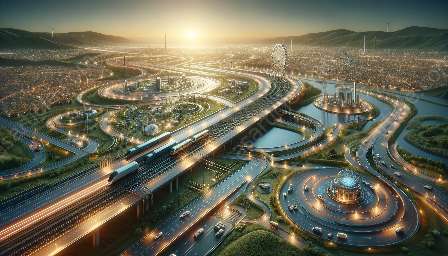As urban areas continue to grapple with traffic congestion and environmental concerns, the focus on non-motorized transport, like cycling and walking, has never been more vital. In this comprehensive topic cluster, we delve into the world of pedestrian mobility, exploring its impact on urban design, the role of transport engineering, and the infrastructure necessary to create pedestrian-friendly cities.
Understanding Pedestrian Mobility
Pedestrian mobility refers to the movement of people on foot, including walking and running. With the rise of urbanization, there is a growing need to prioritize pedestrian mobility to reduce congestion, promote a healthier lifestyle, and minimize the environmental impact of transport.
The Intersection of Pedestrian Mobility and Non-Motorized Transport
When discussing pedestrian mobility, non-motorized transport, such as cycling, comes into focus. Both modes of transport share common goals in promoting sustainable, healthy, and efficient urban living. By creating pedestrian paths and cycling infrastructure, cities can create a more accessible and interconnected network for non-motorized transport users.
Non-Motorized Transport in Urban Planning
Integrating non-motorized transport into urban planning is a cornerstone of pedestrian mobility. Transport engineering plays a crucial role in designing safe and efficient pedestrian paths, cycling lanes, and shared spaces. This ensures that pedestrians and cyclists can move seamlessly through the city, minimizing the conflicts with motorized vehicles.
Transforming Infrastructure: The Role of Transport Engineering
Transport engineering is vital in shaping the physical infrastructure that supports pedestrian mobility and non-motorized transport. From dedicated pedestrian paths to safe crossings and cycling-friendly roads, transport engineers play a pivotal role in creating a sustainable and inclusive urban environment.
Challenges and Solutions
Despite the numerous benefits of pedestrian mobility and non-motorized transport, there are challenges to overcome, including concerns about safety, accessibility, and changing urban landscapes. Transport engineering addresses these challenges by implementing innovative solutions, such as intelligent signaling systems, pedestrian-friendly intersection designs, and dedicated cycling lanes.
Shaping the Future of Urban Mobility
As cities continue to evolve, the importance of pedestrian mobility and non-motorized transport cannot be overstated. By embracing sustainable and inclusive transport solutions, urban areas can create a more livable and vibrant environment for all residents, setting the stage for a truly pedestrian-friendly future.
Conclusion
This topic cluster highlights the significance of pedestrian mobility in the context of non-motorized transport and transport engineering. By understanding the intersections of these concepts, we can work towards creating urban spaces that prioritize the well-being of pedestrians and cyclists, ultimately shaping a more sustainable and accessible future.

